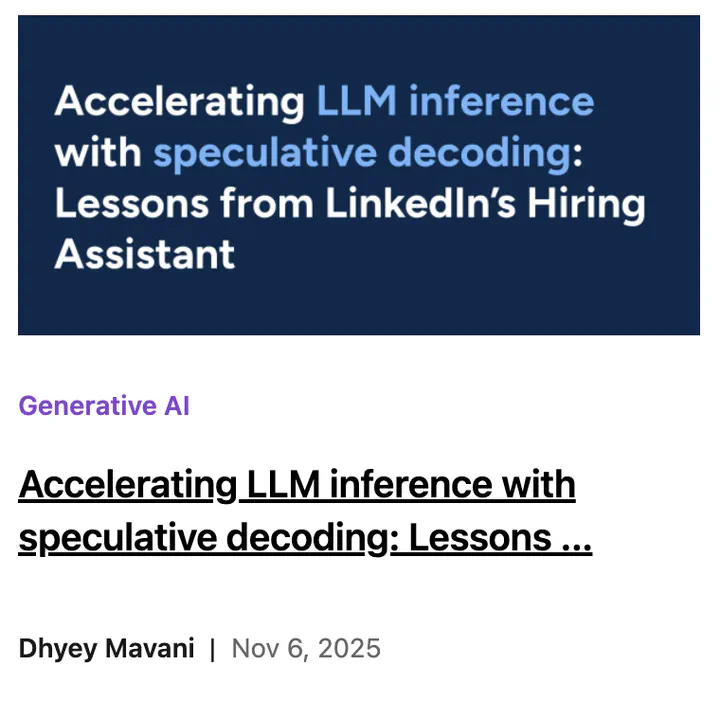Accelerating LLM Inference with Speculative Decoding - LinkedIn Engineering Blog
 LinkedIn Engineering Blog - Speculative Decoding
LinkedIn Engineering Blog - Speculative DecodingLinkedIn Engineering Blog
1000 West Maude Avenue, Sunnyvale, CA 94085
Large language models are transforming how we build software, but they come with a fundamental challenge: speed. For real-time applications like LinkedIn’s Hiring Assistant—the company’s first AI agent for recruiters—latency isn’t just a technical metric; it’s critical to user experience. When an agent needs to process long job descriptions and candidate profiles while generating thousands of tokens, every millisecond counts.
In this LinkedIn Engineering Blog post, the Hiring Assistant team shares how they tackled this challenge using speculative decoding, a technique that accelerates text generation without compromising quality. The result? Nearly 4× higher throughput and an average 66% reduction in P90 end-to-end latency.